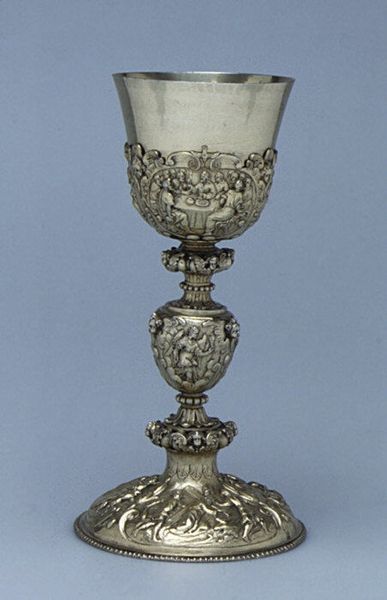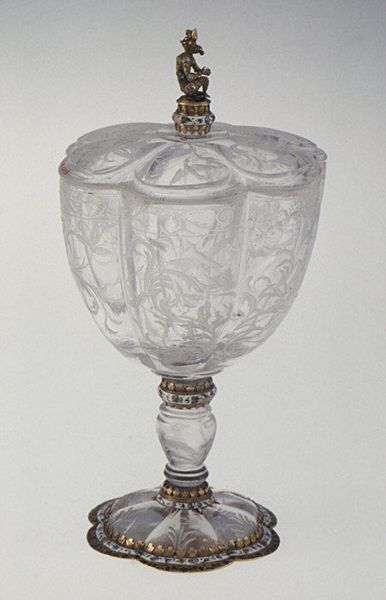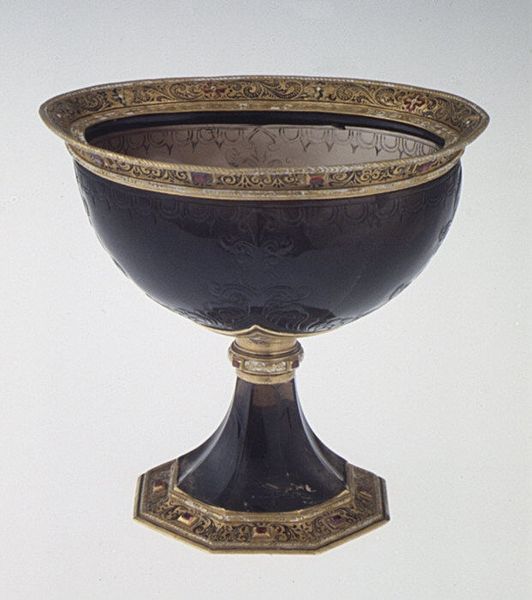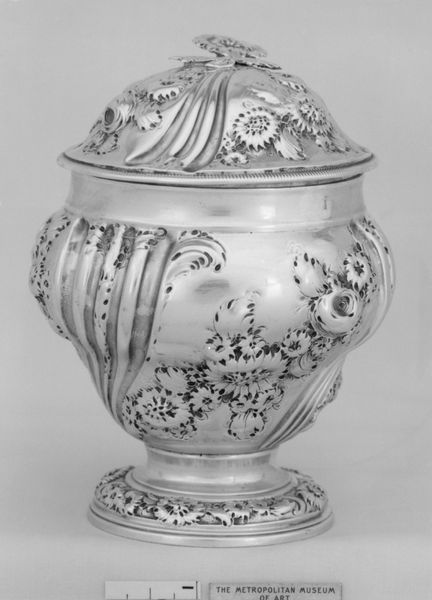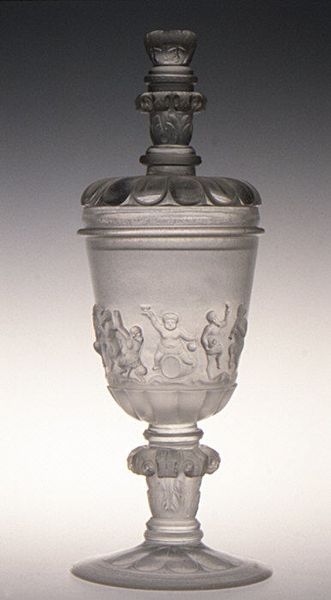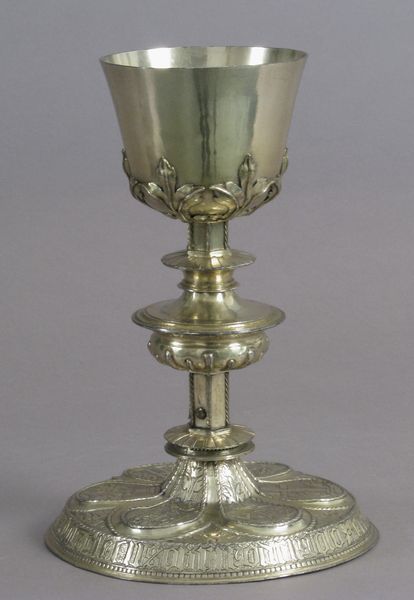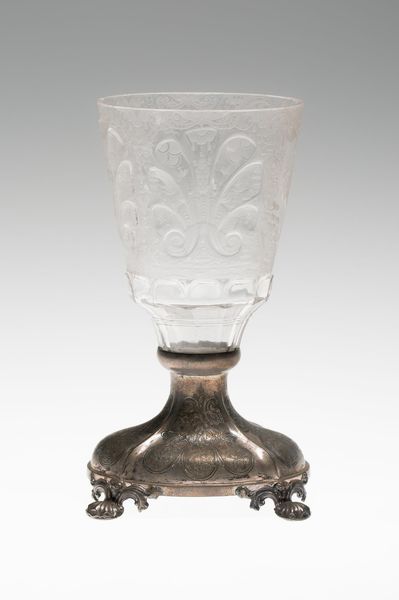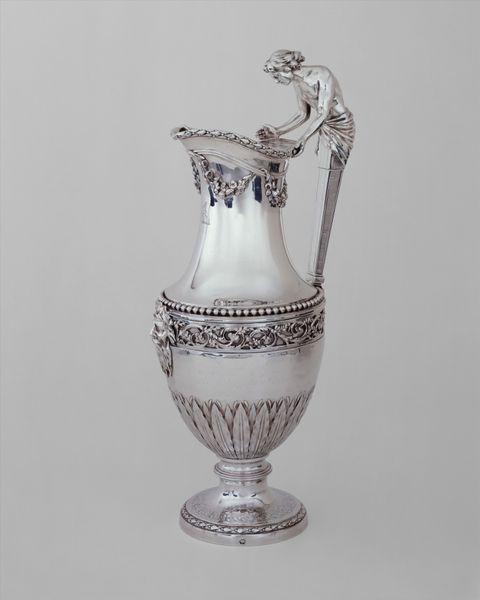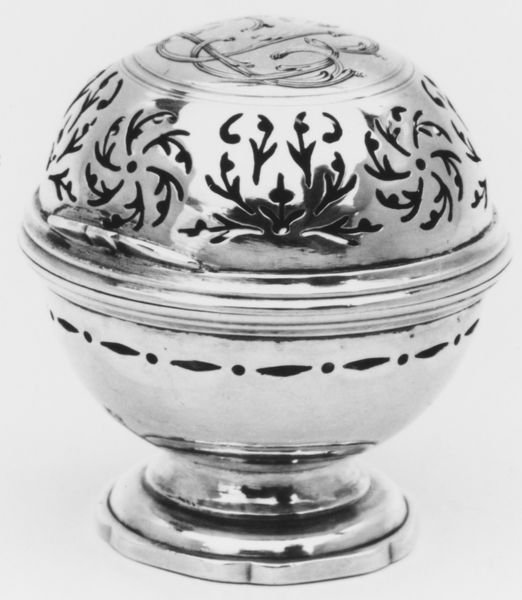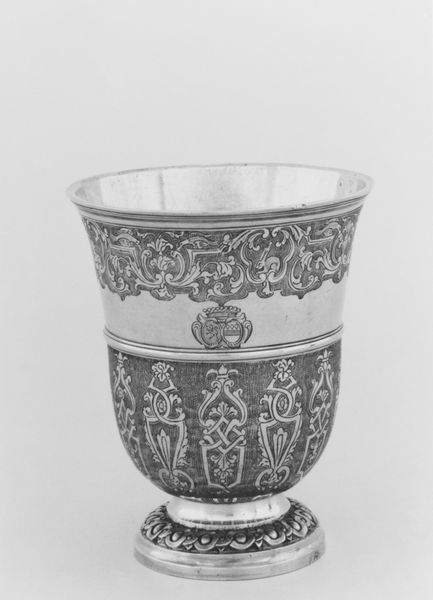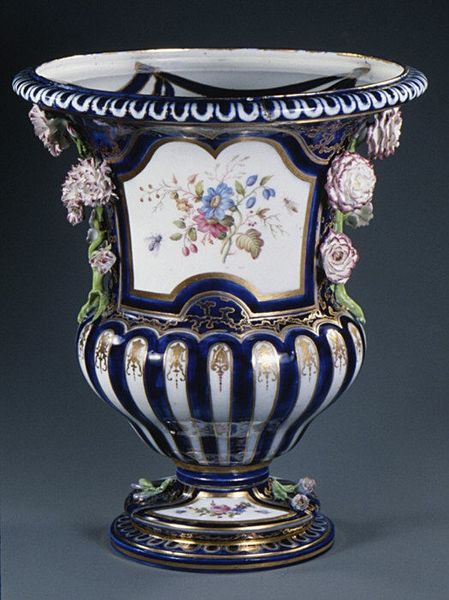
Dimensions: Height: 7 7/8 in. (20 cm)
Copyright: Public Domain
Editor: Here we have a nineteenth-century glass Goblet, made by Società Anonima per Azioni Salviati & C. currently held in the Metropolitan Museum of Art. It gives off a Baroque vibe, and the delicate rendering of cherubs seems very... fanciful. What do you see in this piece? Curator: It is delightful, isn't it? The cherubs immediately evoke Cupid and Psyche, doesn’t it? Think of the Neoclassical revival popular at the time and consider how this work borrows heavily from antiquity. Can you see how it simultaneously celebrates beauty, love, and perhaps even spiritual enlightenment? Editor: Absolutely. The dark glass makes the figures pop, creating this dramatic contrast against innocence and... something a bit darker. It reminds me of Dutch Golden Age painting with their deep blacks. Is this intentional? Curator: Perhaps. What does darkness signify to you? Look at how it makes the goblet feel almost otherworldly, the cherubs like fleeting visions. These objects speak to a desire to preserve a certain kind of cultural memory through decorative objects. Editor: So, the goblet is not just decorative; it's also speaking to collective memory and values? I hadn’t considered that! Curator: Precisely! The symbolism embedded tells stories, shaping and reinforcing our cultural understanding of beauty and emotion. Editor: I guess that’s how an object transcends mere decoration into a real piece of cultural history. Thanks! Curator: Indeed! Paying attention to these visual cues unveils so much richness.
Comments
No comments
Be the first to comment and join the conversation on the ultimate creative platform.

